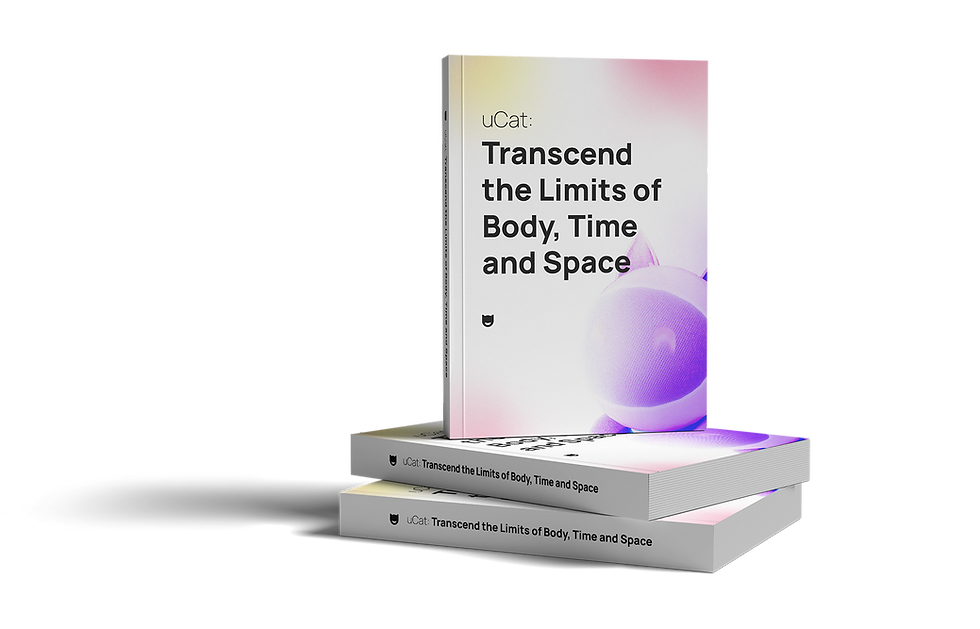And they’re not the chrome-laden metallic overlords we once feared…
The idea of embodying our minds within personalized avatars and seamlessly immersing ourselves in virtual worlds has long been a speculation of science fiction. It has been extensively explored through sci-fi cinema spectacles, video games, and philosophy, which has set a precedent for an uncertain mind-controlled future. Increasingly, however, aspects of this speculation are no longer confined to the realms of fantasy.

Ann, a stroke survivor, reclaims her speech, voice, expressions, and likeness after 18 years of paralysis. Through her brain-chip-powered avatar, she hopes to become a professional counselor. By UC San Francisco (Metzger et al., 2023)
As of the year 2024, the performance of Cortical Motor Neuroprosthetics (”Motor BCIs”) is beyond the tipping point for practical applications. In short, by listening in on the rich activity of the motor cortex they can interpret the mind’s commands for the body’s musculature.
Significant advances in the ability of these Motor BCIs to restore motor function have gathered support for three critical hypotheses:
Innate attempts at fine control of a) upper limb, b) lower limb, and c) speech articulators can be extracted as electrophysiological data streams at enough spatiotemporal resolution to convincingly emulate their function.
The emulation can be executed at near-average human speeds, sufficient for performing typical day-to-day activities.
The end-to-end system is safe, reliable, lasting, and portable enough to be commercialized as a take-home product.
For most people, Motor BCIs can improve their connection with technology. For people with severe communication and mobility difficulties (”Users”), however, they represent the hope to reclaim their agency, expression, independence, and participation in society.
Academic labs have demonstrated the technical feasibility of BCIs, but clinical adoption lies in the hands of private firms. As the scientific endeavor tips over into an engineering one, the world watches closely.
As customary in the deep technology sector, many leading scientists have launched commercial ventures of their own, commercializing their academic work in the shape of: Neuralink, Paradromics, Synchron, Precision Neuroscience, ONWARD, CorTec, Blackrock Neurotech, NeuroXess, and INBRAIN Neuroelectronics.
This handful of high-performance Motor BCI startups share over $2 billion in funding without a single product approved for use in the clinical market by regulators such as the Food and Drug Administration (”FDA”).

Private funding raised by just 9 Motor BCI startups as of April 2024
Patients, doctors, and families all wait on bated breath for the cut of the ribbon. Some have been waiting decades. Some never lived to see the ribbon.
🌜 Bringing Motor BCIs to market is a challenge akin to building a base on the moon.
Nonetheless, given these hypotheses, the industry should formulate applications to maximize User value while remaining commercially viable. Yet, the range of formulated applications that motivate this development is underwhelming. Each startup boasts technology specs while neglecting to reveal how exactly their Users are to benefit. How can such multi-disciplinary efforts yield a narrow-minded outlook on patient outcomes?
A clinical application most favored by the key startups is the ability to control a computer cursor, granting the User some independence in performing digital activities of daily living. The startups’ longer-term aspirations aim towards the command over an exoskeleton, a robot, or the User’s own body by bypassing the region affected by paralysis.
While the former application disappointingly shrinks rich decoded movement into mere 2D cursor control, the latter will long be unavailable outside the lab and carry a significant price tag.
However, there is another valuable, affordable, and feasible, yet underrepresented, application for Motor BCIs — that of emulating the User’s attempted movement and speech on an expressive virtual body (“Avatar”), embodied inside VR. Commercially viable on its own, such an application is also an important stepping stone for longer-term robotic aspirations, serving as a simulator for diverse everyday situations.
What you are about to read is the world’s first practical proposal of a commercial Motor BCI to VR system, which includes a rigorous evaluation of User needs, modern Motor BCI capabilities, and their joint realization in VR. This system is called “uCat” and its prototype is revealed towards the end.
Part 1 of a series of unedited excerpts from uCat: Transcend the Limits of Body, Time, and Space by Sam Hosovsky*, Oliver Shetler, Luke Turner, and Cai Kinnaird. First published on Feb 29th, 2024, and licensed under CC BY-NC-SA 4.0.

uCat is a community of entrepreneurs, transhumanists, techno-optimists, and many others who recognize the alignment of the technological frontiers described in this work. Join us!
*Sam was the primary author of this excerpt.
Comentários